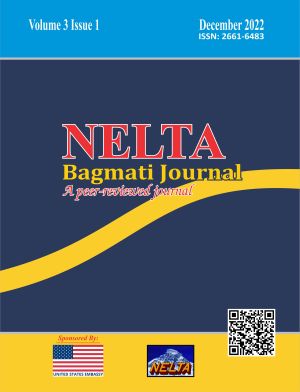Relevancy of Revised Bloom's Taxonomy in School-Level English Language Curriculum
DOI:
https://doi.org/10.3126/nbj.v3i1.53413Keywords:
Curriculum, taxonomic, order-skills, hierarchy, techniquesAbstract
The study is based on the analysis of curriculum objectives of Compulsory English textbooks for grades 6, 9 and 11 based on the educational taxonomy of Bloom and its relevance. It is based on the document analysis of all two-level curriculum analysis: basic and secondary level and the selection of the objectives in relation to the six levels of educational objectives and higher order thinking and lower order thinking skills. Based on the international and national review of secondary sources, the study focuses on the curriculum analysis of the Compulsory English curriculum. It was found that the curriculum objectives were more focused on reading and writing skills compared to listening and speaking skills. With regard to thinking skills, it was found that the majority of the curriculum objectives and its learning outcomes included lower order thinking skills (LOTS) more than higher order thinking skills (HOTS) in grades 6 and 9 more than of grade 11.




